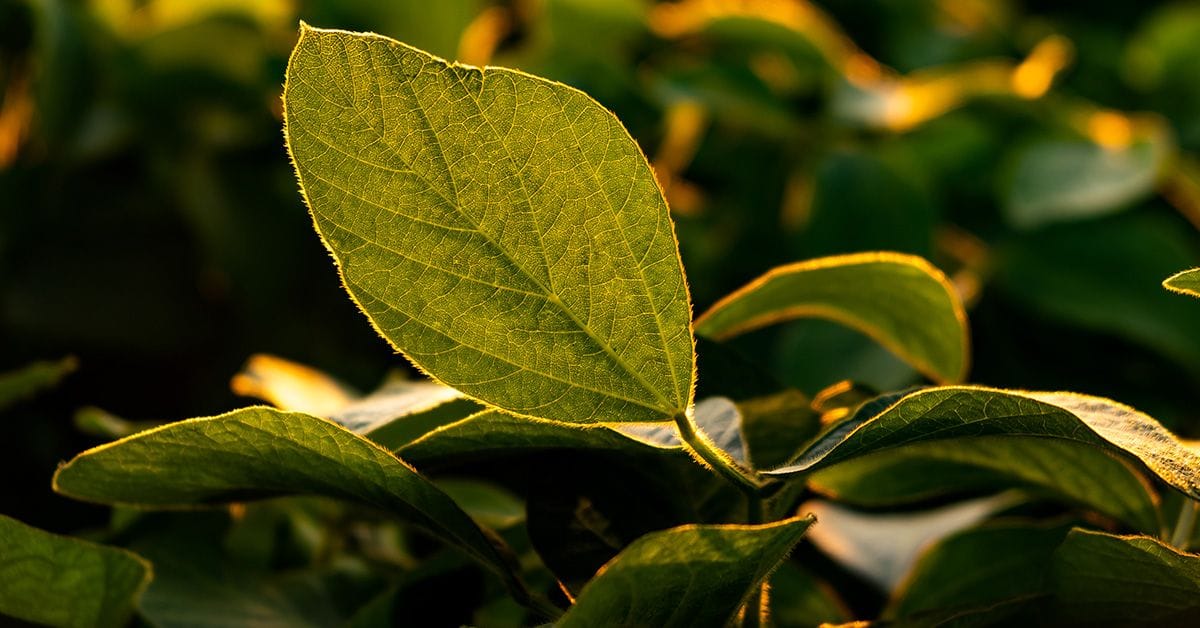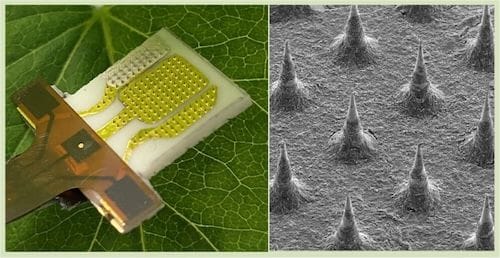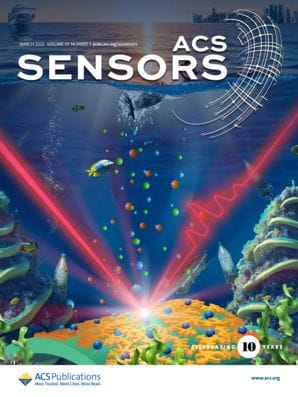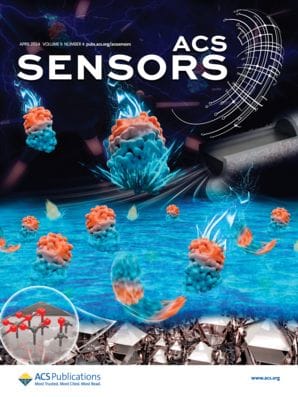Plant stress results in poor health and growth, and while this may be sad for your indoor monstera, it can be crippling for agriculture. A new wearable sensor for plants aims to detect stress signals in real time, enabling growers to intervene as early as possible.

Our environments can be stressful. The same is true for plants, and their struggles are often more pronounced since they're physically incapable of relocating when things get tough. Plant stress typically manifests as wilting, leaf discoloration or dropping, and stunted growth. This is frequently caused by stressors such as pests, drought, extreme temperature, or infection.
As with many stress-related problems, early detection of plant stress is crucial, but gaps still remain in the development and implementation of precise, cost-effective methods. To address this, researchers at Iowa State University recently reported in ACS Sensors on a wearable hydrogel patch for plants that can quickly sense stress and relay the information to a grower in real time.1 The electrochemical sensor attaches directly to live plant leaves and monitors hydrogen peroxide (H2O2), a distress signal produced when a plant’s normal biochemistry is altered. In nature, its purpose is to signal between cells to tell them to activate their defense mechanisms, but it also damages proteins, lipids, and DNA. Early detection of H2O2 would therefore help growers to quickly alter key plant care factors and prevent further damage. Previous H2O2 detection methods have required removal of plant parts and multiple processing steps, making them unwieldy to use in practice. The new sensor uses an array of microneedles to monitor hydrogen peroxide in plants under biotic stress.

The team developed the microneedle array using a biohydrogel layer of chitosan (a natural biopolymer) and reduced graphene oxide, functionalized with horseradish peroxidase. These elements combine biocompatibility, hydrophilicity, porosity, and electron transfer ability—all suitable features for an electrochemical sensor. The resulting sensor is able to detect H2O2 through the catalytic reaction of the enzyme (and there is no need to remove any plant parts). Although the sensor can be used to monitor a solution extracted from the plant, it is also possible to directly attach it to a plant leaf with the inserted microneedle—with results available after approximately one minute. The researchers also evaluated the sensor's ability to detect H2O2 after inoculation with a bacterial pathogen and validated its performance against known assays. This demonstrates its potential as a portable device for on-site measurement of reactive oxygen species in plants, representing a rapid and cost-effective solution for detecting plant stress.
“We can achieve direct measurements in under a minute for less than a dollar per test,” says Corresponding Author Liang Dong in a recent press release. “This breakthrough will significantly streamline analysis, making it practical for farmers to use our patch sensor for real-time disease crop monitoring.”

A Biohydrogel-Enabled Microneedle Sensor for In Situ Monitoring of Reactive Oxygen Species in Plants
DOI: 10.1021/acssensors.4c02645
Further Explorations: Plant Biosensors
Similar results have been achieved by a team in China using a biosensor based instead on a metal–organic framework (MOF)—but providing similar real-time, remote, and in situ detection of H2O2.2 This was done simply by spraying the plant with horseradish peroxidase and a precursor of zeolite imidazolate frameworks-8—essentially creating biosensors in situ. The read out was done by a color-to-thermal signal conversion, and thanks to the plant’s low absorption in the near infrared region, remote thermal sensing was also possible by combining a laser and thermometer.
Another group have been able to monitor plant health with near-infrared fluorescent nanosensors based on single-walled carbon nanotubes functionalized with a DNA aptamer that binds to hemin,3 a chloride of heme that can act as a plant growth regulator and potent biostimulator, and which is essential for plants to protect against abiotic stress.
Such biosensors could help to monitor plant signaling and metabolism in a non-destructive way, while still achieving real-time, in situ analysis. This will be important in the coming years, as continuing global population growth makes increasing agricultural productivity ever more important. A Mini-Review in ACS Omega describes other types of in vivo sensors that could be used for plant health monitoring, including genetic engineering, imaging and spectroscopy, and electrical approaches.4
Another possibility is to develop miniaturized sensors that can detect a specific pathogen. Progress in this field has allowed researchers to distinguish infected from noninfected plants, while rapidly quantifying virus levels. An example of this type of sensor, reported in ACS Sensors, employs molecularly imprinted polymer technology based on polypyrrole—a conductive organic polymer—to generate nanocavities in the porous polypyrrole when bean pod mottle virus is present.5 This cavitation reveals the spatial distribution and concentration of the virus across distinct leaves.
Factors to consider for future plant sensors include accuracy, specificity, sensitivity, durability, cost, ease of use, and environmental impact. But a sensor that meets all the parameters would ultimately allow precision agriculture—where expensive resources are directed where they are needed and crop yield is maximized.
References
- Singh, N. et al. A Biohydrogel-Enabled Microneedle Sensor for In Situ Monitoring of Reactive Oxygen Species in Plants. ACS Sens. 2025, 10, 3, 1797–181.
- Yan, Y. et al. Metal–Organic Framework-Based Biosensor for Detecting Hydrogen Peroxide in Plants through Color-to-Thermal Signal Conversion. ACS Nano 2022, 16, 9, 15175–15187.
- Wu, H. et al. Monitoring Plant Health with Near-Infrared Fluorescent H2O2 Nanosensors. Nano Lett. 2020, 20, 4, 2432–2442.
- Roper, J. M. et al. Emerging Technologies for Monitoring Plant Health in Vivo. ACS Omega 2021, 6, 8, 5101–5107.
- Singh, N. et al. Plant Virus Sensor for the Rapid Detection of Bean Pod Mottle Virus Using Virus-Specific Nanocavities. ACS Sens. 2023, 8, 10, 3902–3913.
